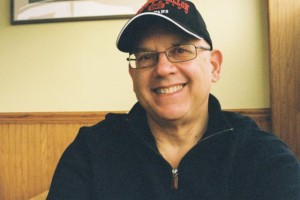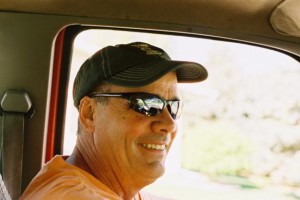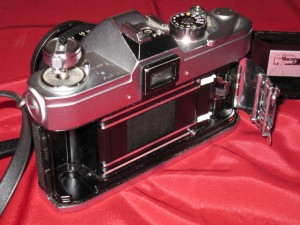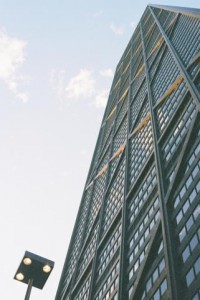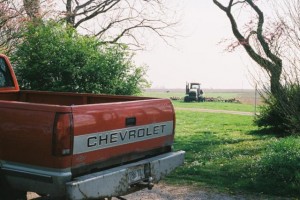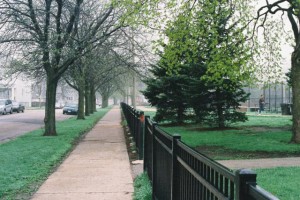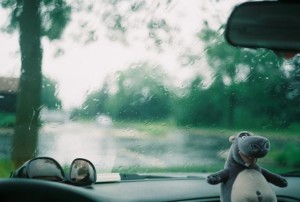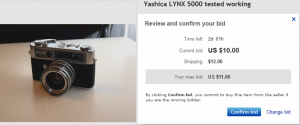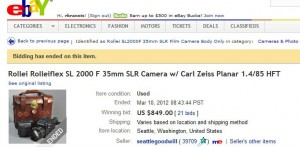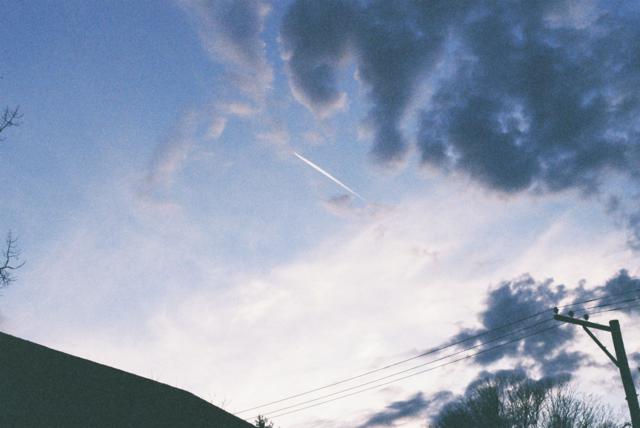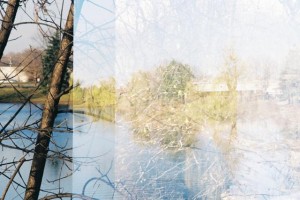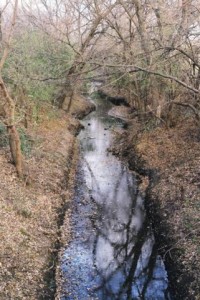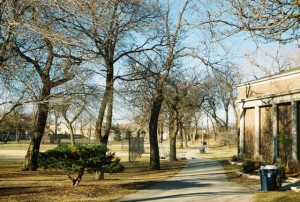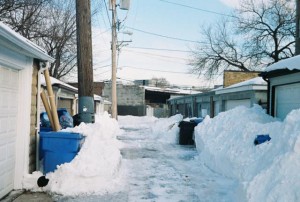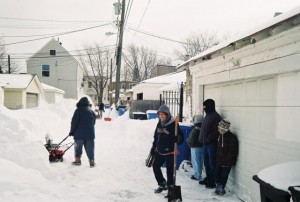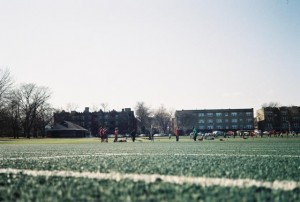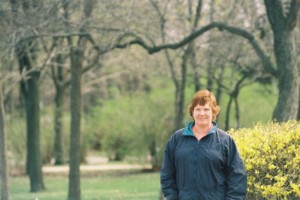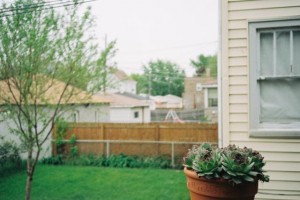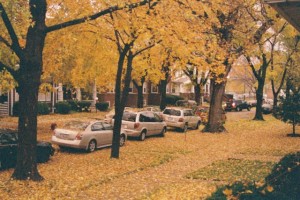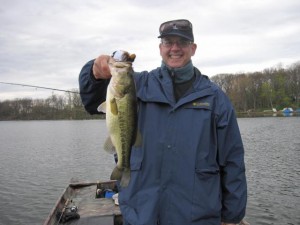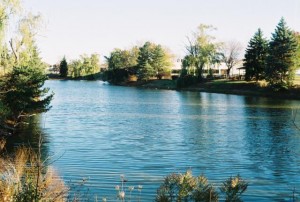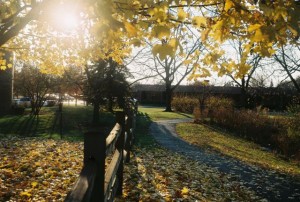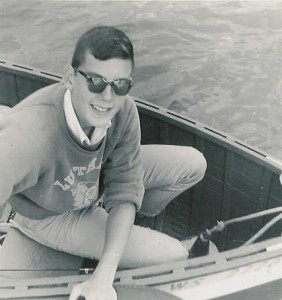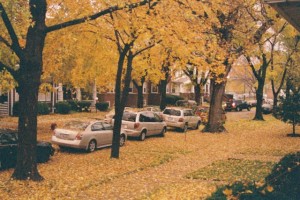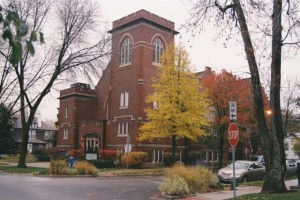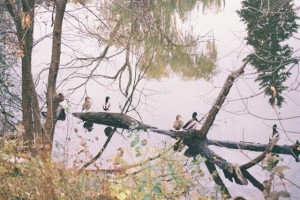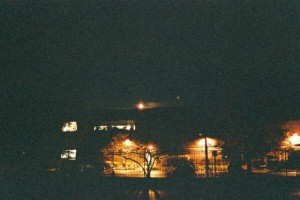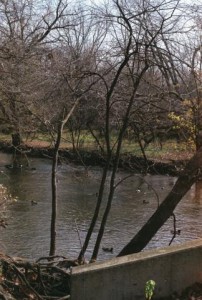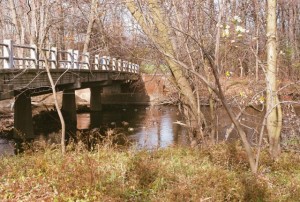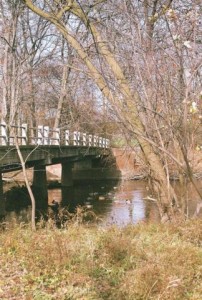I just had my Canon FTb photos developed and I am delighted with the outcome. Wonderful photos in my opinion for a 40 year old camera.
My daughter and I meet for Sunday breakfasts every now and then and on this day I metered and focused on her and then gave the Canon FTb to her. She took my photo (I am proudly wearing a Carnegie Mellon University baseball hat).
I had to purchase this rock solid Canon FTb at a quirky antique shop on Chicago’s far north side. I knew it was worth a solid $25, the teen-age clerk texted the distant owner for a price on the camera with its 50mm lens, and the owner said sell it for $15.
I tried to persuade Michelle behind the register to purchase it for $15 dollars. It was a bargain. She declined (she said she had too many projects going on). So I purchased it.
I own 70 cameras (35 untested). So why did I purchase it? It’s a fine camera oozing with old school quality from 3 to 4 decades ago. Also, I believe we all need to spend some money in antique shops to keep these great little places alive.
So what did I get for $15 dollars this chilly January 21, 2012?
Initial Impressions on my Canon FTb Camera
Now that I have actually purchased and used various film cameras, I actually know how to determine if a camera is decent before purchasing it. This is what I learned about the Canon FTb in the antique store.
- Lens. I found this camera with a Canon 50mm 1.8 FD lens. The skylight filter would not come off but the lens looked fine in the light. No scratches or fingerprints.
- Body. At the time of purchase I thought the body was in good shape. But only now I notice a previous owner scratched an 11 digit code at the bottom of the camera.
- Shutter speeds. I tested all shutter speeds in the store and they all sounded accurate and worked.
- Aperture. I opened up the back of the camera, pointed the camera to the artificial lights, adjusted the aperture, and tested different aperture sizes to see if they were working. Tested OK.
- Film advance. I opened the back of the camera and was pleased to see that it had the Canon QL system for loading film. The QL or Quick Loading system is an easier method for loading film. A spring tensioned plate pressures your film when you close the back of the camera. Trust me, it’s just easier to load.
- View finder. No debris or tiny black pieces in the viewfinder.
- Battery chamber. No battery but at least the battery chamber was in good shape, no sign of battery acid. The battery chamber is on the left side by the rewind crank.
This camera seemed rock solid. For a camera over 30 years old, it seemed just fine. I would later learn the camera was made in 1971 and the Canon FTb plus its 50mm lens weighed 3 pounds. Since I couldn’t persuade the young lady behind the counter to purchase it, I gladly purchased it. Offered $15 and the owner texted back to take the offer.
Canon FTb Review – Technical Details
I know that visitors want specs, but I’m not a spec kind of guy. Neither am I willing to steal somebody else’s work off the Internet. So if you want terrific detail on specifications go to the Butkus manuals. But for now, here are my simple technical details.
- Produced. Production started in 1971.
- Camera type. 35mm SLR.
- Lens mount. Canon bayonet type FD mount.
- Mirror. Canon’s manual claims it is a “shockless quick return system”. It doesn’t jump much in your hands at any speed. Nice feell.
- Shutter. B and 1 second to 1/1000 of a second.
- Film Speed Scale. ASA 25-2000.
- Exposure Meter. Built in using CdS photocell. Match needle meter through the viewfinder.
- Film Loading. The wonderful Canon QL (Quick Loading) method for loading film. You will enjoy it.
When I purchased this camera it felt good in my hands. But if you’re researching purchasing a Canon FTb, you need to visit Photography Review, people are very fond of the Canon FTb, their reviews of the camera are very flattering. With 49 reviews the Canon FTb has a 4.82 out of 5 rating. Impressive.
Provenance or History
I prefer purchasing cameras at garage sales or even on Craigslist where I can learn something about my new, old camera. But no history on this camera.
Again, visit Photography Review for the wonderful stories about the Canon FTb. Vietnam War veterans purchasing their first camera overseas, forest fire fighters parachuting into the unknown with a Canon, students hiking in South America have all loved the Canon FTb. I’m getting excited about the camera just writing about it.
But now my Canon FTb has its own short history. I don’t know where it’s been for 40 years, but I know this solid camera has its own stories to tell. It can tell you about a Sunday morning drive in Mike’s pickup truck in central Illinois in the spring of 2012.
My Repairs for the Canon FTb, None
No repairs needed, thankfully.
Canon FTb Battery
This is another mercury battery you can’t purchase in the United States anymore. I hear rumors that you can buy mercury camera batteries in Canada.
Try a 1.35 volt zinc-air battery to replace the mercury battery used in the Canon FTb. Or better still, consider purchasing a light meter.
How does the Canon FTb feel?
It feels like a professional SLR: heavy, solid, it even makes a nice sound when it advanced the film automatically..
Nice features of the Canon FTb.
- Solid, but not horribly heavy. Yes, I’ve used that phrase before to describe other cameras. But for a 30 minute walk in Chicago I don’t mind having the Canon FTb over my shoulder. Hiking with my camera bag, Canon FTb, two lenses, and light meter is a different story, that’s heavy.
- Feels good. Yes, it feels good when you shoot it. It’s always cool to the touch and I like that feeling. It’s metal folks, heavy metal
- Canon QL. I had to learn how to load film all over again when I took up film cameras after a two decade hiatus. But the Canon QL (Quick Loading) contraption makes a lot of sense. The film almost loads itself. Shown below is the backside of the camera, perhaps you can see the QL door swung to the right. As you close the rear of the camera, the QL gate closes on the film and holds it in place.
Problems? Yes.
- Battery problem. This camera was built around a mercury battery. That’s now against the law in the United States. Finding a replacement that gives you the same voltage will be a problem. But perhaps finding the correct battery is worth it to use this fine metal camera. This seems to be the correct replacement for the mercury battery, this is a Wein MRB625 1.35v Zinc-Air battery.
Canon FTb Sample Photos
I can’t remember having so many “keeper” photographs from the first roll of film through an old camera. My son now works at the Water Tower on Michigan Avenue in Chicago, IL. It’s next door to the Hancock Building.
My first roll of film through the Canon FTb was Walgreen’s ASA 400 speed film. I think in the future I’ll use ASA 200 speed film. I thought my battery had died because when turned on the metering the needle was off the charts on a sunny day. Apparently, ASA 400 speed film doesn’t like sunny days that much. Later at home I tried my camera and the battery and meter were fine. The problem? A sunny day at noon was too bright for the ASA 400 speed film and my camera’s metering system.
I thought this 24 exposure roll of film would be boring. I was wrong. 1/2 of my exposures came out nicely. Two thirds of the roll was shot in my Chicago neighborhood and the last 3rd of the roll was shot near Chestnut, IL. I used the camera’s meter (with a 1.5v battery) and also my Gossen light meter.
It’s nice visiting farm country, taking photos of tractors, and getting away from Chicago. Central Illinois is my second home.
Canon FTb Review – Summary
This Canon FTb was a wonderful purchase for $15. On my first roll of ASA 400 speed film, using a slightly incorrect battery for the metering system, using my Gossen Digisix light meter, 12 of my 24 exposures were wonderful. What a great piece of engineering from approximately 1970.
Whether you’re taking a stroll by Kilbourn Park in Chicago, IL on a misty spring morning or driving central Illinois in a pick up truck, the Canon FTb won’t let you down.
Thanks for reading my Canon FTb review today. I don’t know where this 40 year old camera has been, but I do know its home for the next one or two decades: my home.
Thanks for visiting What is a Film Camera today.


